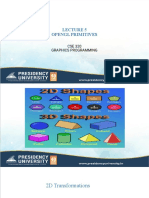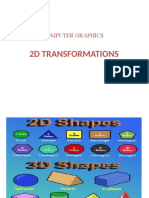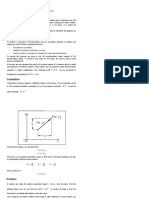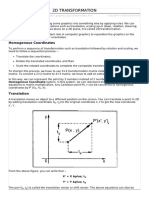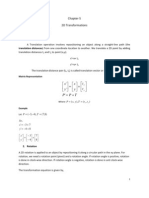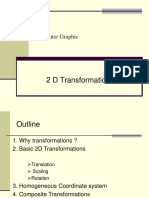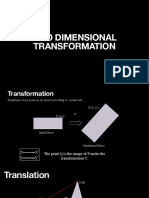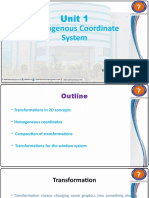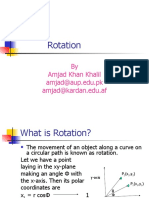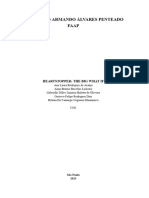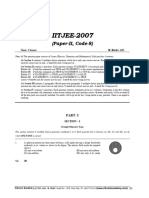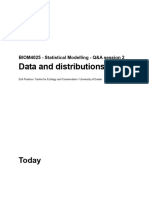0% found this document useful (0 votes)
49 views30 pagesComputer Graphics: Lecture 06-Transformations
The document discusses various 2D and 3D transformations including translation, rotation, scaling, and reflection. It provides the mathematical formulas to perform each transformation using matrix multiplication. For example, translation is represented by a matrix adding offsets to x and y, rotation uses trigonometric functions of the angle to modify x and y, and scaling multiples x and y by separate factors. The order of multiple transformations matters as the result depends on the matrix multiplication order.
Uploaded by
any nameCopyright
© © All Rights Reserved
We take content rights seriously. If you suspect this is your content, claim it here.
Available Formats
Download as PDF, TXT or read online on Scribd
0% found this document useful (0 votes)
49 views30 pagesComputer Graphics: Lecture 06-Transformations
The document discusses various 2D and 3D transformations including translation, rotation, scaling, and reflection. It provides the mathematical formulas to perform each transformation using matrix multiplication. For example, translation is represented by a matrix adding offsets to x and y, rotation uses trigonometric functions of the angle to modify x and y, and scaling multiples x and y by separate factors. The order of multiple transformations matters as the result depends on the matrix multiplication order.
Uploaded by
any nameCopyright
© © All Rights Reserved
We take content rights seriously. If you suspect this is your content, claim it here.
Available Formats
Download as PDF, TXT or read online on Scribd
/ 30



